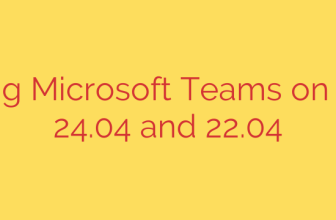
The Future of Freight: How AI is Revolutionizing Railroad Safety
The North American railroad network is the backbone of our economy, a sprawling system of steel arteries moving vast quantities of goods across the continent. However, maintaining the safety and integrity of this critical infrastructure is a monumental task. For decades, railcar inspection has relied on slow, manual processes that are often prone to human error. Today, a technological shift is underway, with artificial intelligence (AI) and advanced imaging leading the charge to create a safer, more efficient railway system.
At the forefront of this revolution is the development of automated, high-tech inspection portals that are fundamentally changing how rail assets are monitored. These systems are moving inspections from the rail yard to the mainline, providing real-time data that can prevent catastrophic failures before they happen.
The Problem with Traditional Inspections
Traditionally, inspecting a freight train is a labor-intensive process. Inspectors must physically walk the length of a train, which can be over a mile long, visually checking for defects in wheels, brakes, and structural components. This method is not only time-consuming, causing significant delays and network congestion, but it also carries inherent risks. Subtle cracks or overheating components can be easily missed by the human eye, leading to potential derailments that endanger lives, damage the environment, and cost the industry billions.
A Technological Leap Forward: The Railcar Inspection Portal
To address these challenges, innovators have developed comprehensive solutions like the Railcar Inspection Portal (RIP®). This is not just a single camera but an integrated suite of technologies designed to scan and analyze every critical component of a railcar as it passes through at speeds up to 120 mph.
Here’s how it works:
- High-Resolution Imaging: As a train travels through the portal, a sophisticated array of high-resolution cameras and sensors captures thousands of images from every conceivable angle—top, bottom, and sides.
- AI-Powered Analysis: This massive amount of visual data is instantly fed into a powerful AI engine. Using advanced computer vision and machine learning algorithms, the software analyzes the images to automatically detect a wide range of defects, such as broken springs, worn brake shoes, open hatches, or structural damage.
- Real-Time Alerts: When the AI identifies a potential issue, it immediately flags the specific car and the nature of the defect, sending an alert to the railroad operator. This allows them to proactively pull the compromised car for maintenance before it fails.
The Tangible Benefits of Automated Inspection
The shift toward AI-driven inspection delivers powerful, measurable results that impact safety, efficiency, and the bottom line.
- Dramatically Enhanced Safety: The primary benefit is a monumental improvement in safety. By identifying mechanical flaws with a high degree of accuracy and consistency, these systems prevent equipment-related derailments, protecting crews and communities along the rail lines.
- Unprecedented Operational Efficiency: Automating inspections eliminates the need for trains to stop and wait for manual checks. This reduces dwell times, alleviates network congestion, and increases the overall velocity of the freight system, ensuring goods get to their destinations faster.
- Data-Driven Predictive Maintenance: Beyond just finding existing problems, these portals collect a wealth of data on every car that passes through. Over time, this data allows railroad operators to move from a reactive to a predictive maintenance model, identifying wear patterns and servicing components before they reach a critical failure point.
Actionable Advice for Infrastructure and Logistics Leaders
The advancements in rail inspection offer crucial lessons for any industry reliant on critical, heavy-duty infrastructure.
- Embrace Automation for Critical Safety Checks: Identify areas in your operation where manual inspections create bottlenecks or safety risks. Investing in AI and computer vision can provide a more reliable and consistent layer of security and quality control.
- Leverage Data for Long-Term Strategy: Don’t just collect data—analyze it. The insights gathered from automated systems can reveal trends in equipment wear and tear, helping you optimize maintenance schedules, reduce long-term costs, and improve asset lifespan.
- Prioritize Comprehensive Solutions: Look for technology partners that offer a complete, end-to-end solution rather than just individual components. An integrated system that combines hardware, software, and data analytics will deliver the most significant and lasting value.
As technology continues to evolve, intelligent inspection systems are setting a new standard for the entire transportation industry. By harnessing the power of artificial intelligence, the rail sector is building a future that is not only more efficient and profitable but, most importantly, significantly safer for everyone.
Source: https://datacenterpost.com/duos-technologies-group-to-present-at-ld-micro-main-event-xix/








